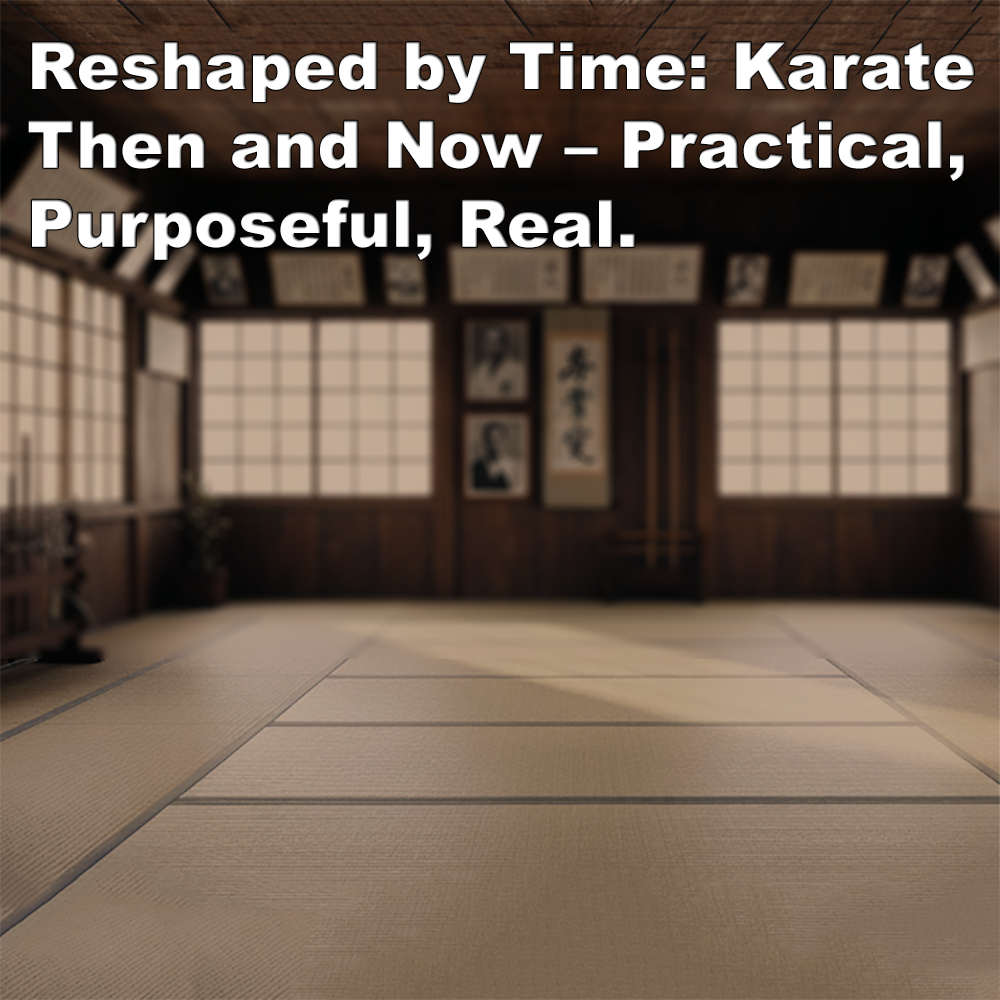
Reshaped by Time: Karate Then and Now – Practical, Purposeful, Real.
Posted by ADAM CARTER on OCT 09, 2025

Reshaped by Time: Karate Then and Now – Practical, Purposeful, Real.
(Approx 2 minute 30 second read)
The comments on my articles are a great way for me to think about writing again, and one such comment got me thinking about history once more.
The article was about exercise in the dojo replacing karate. A person commented that Gogen Yamaguchi would only teach exercise for many months, no karate. Interesting historical note.
I guess at the time, many of the prospective students were quite unfit and some perhaps unwell after the war. Both Okinawa and Japan were still rebuilding.
Changing tack a little, it got me thinking about how karate had been reshaped in modern times, postwar.
Many of the karate instructors who began teaching during that period were trained in the ‘school karate’ model, where the emphasis was placed on physical development, creating strong bodies and disciplined minds.
Of course, not all schools followed this way, but many did.
I believe most of the senior teachers still had knowledge of what karate had been before the war, but due to changing times, they shaped their instruction to suit the needs of the day.
When I began karate in 1974, there wasn’t much choice in where to train, one dojo actually, mainly focused on sport and competition. We were shown bunkai, but it didn’t take long to realize it wasn’t very ‘real’. Even then, I sensed there was more to karate than what we were doing.
It’s great that many practitioners today are interested in the applications within kata. For some, it’s the first time they’ve really thought about detailed explanations. Much of what they learned up until these thoughts popped into their minds had always been taught as block-punch-kick, and little more.
So many of us are trying to make sense of what was left behind, using a common sense approach and what’s described as HAPV theory to rediscover what was always there, hidden in plain sight.
In a way, I’m disappointed that for a period of time I was left with ‘just fighting’. Don’t get me wrong, it was great fun, but I just feel that I may have missed out on so much. I guess it’s getting older.
But perhaps that’s the point. Karate has always reflected the times in which it’s practiced. After the war, people needed rebuilding, physically and mentally. On Okinawa, where karate was originally developed for self-defense, life itself had changed dramatically. The need to protect yourself in daily life wasn’t the same as it once had been. So karate changed with it.
When we understand that, we can also understand why the emphasis moved away from personal protection and toward physical education, discipline, and competition. It wasn’t wrong, it was necessary for its time. But it also meant that much of karate’s original intent was quietly set aside.
What we’re doing now, I think, is rediscovering that intent. We’re piecing together what was always meant to be there: the study of effective self-defense. Not the kind found in unrealistic drills or choreography, but the kind that reflects real human behavior and violence, the very thing our predecessors sought to understand and survive.
Maybe that’s what karate is really about today. Not trying to preserve the past exactly as it was, but understanding it better, so we can practice karate with purpose again. To make karate what it was always meant to be, practical, purposeful, and real.
But of course, there are always those who just want a bit of fun and entertainment, some competition, and to get fit in the process. Context is everything (there it is again).
Written by Adam Carter – Shuri Dojo
